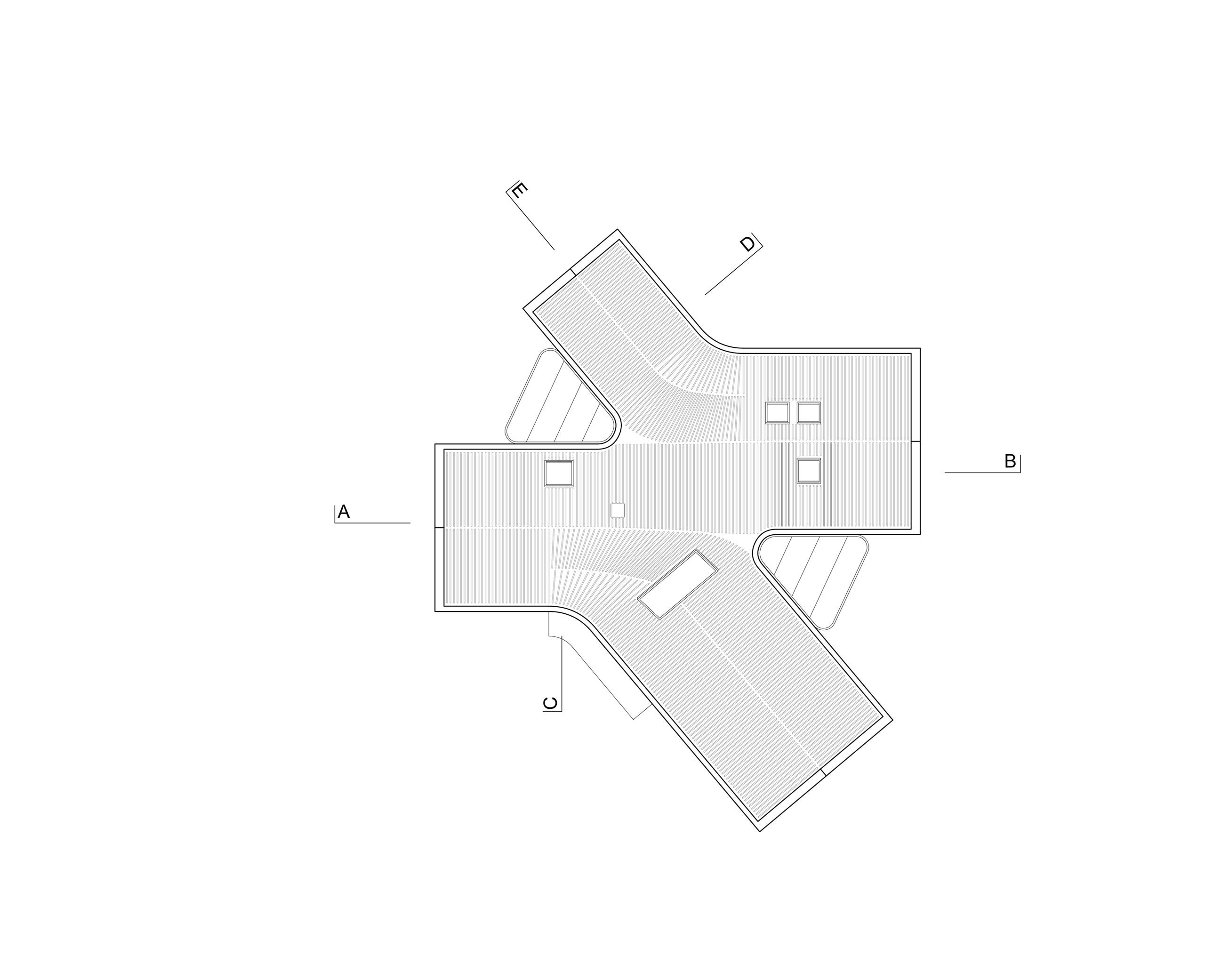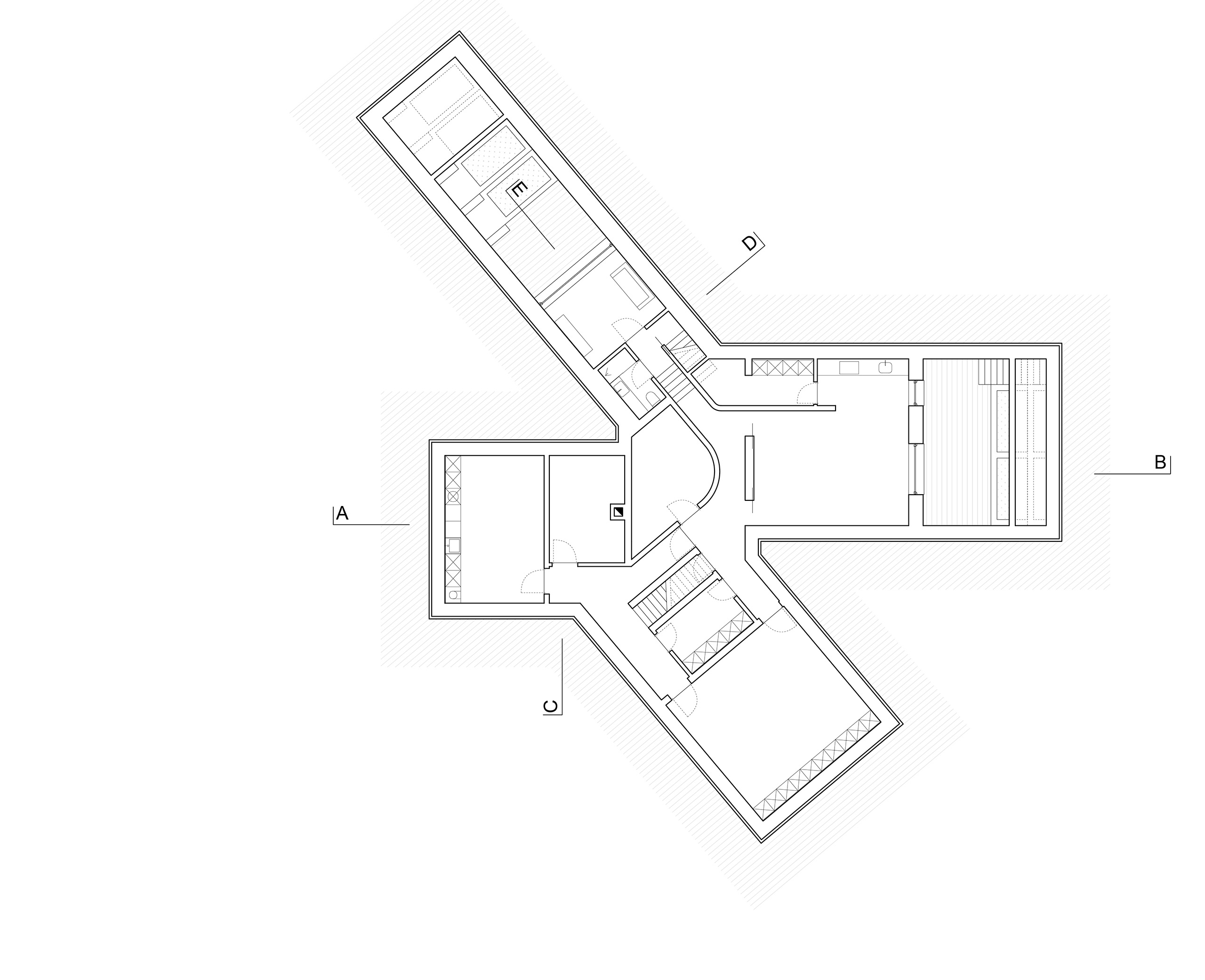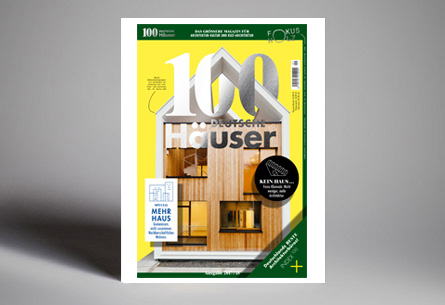
Haus H
Hövelhof
2017
The design for a single-family house at the edge of a small town in the western part of Germany was to combine vernacular and contemporary formal language. Thus, we examined how typical regional patterns could be further developed with the help of digital planning tools in the sense of a contemporary “parametric regionalism”.

Playing with saddle roofs
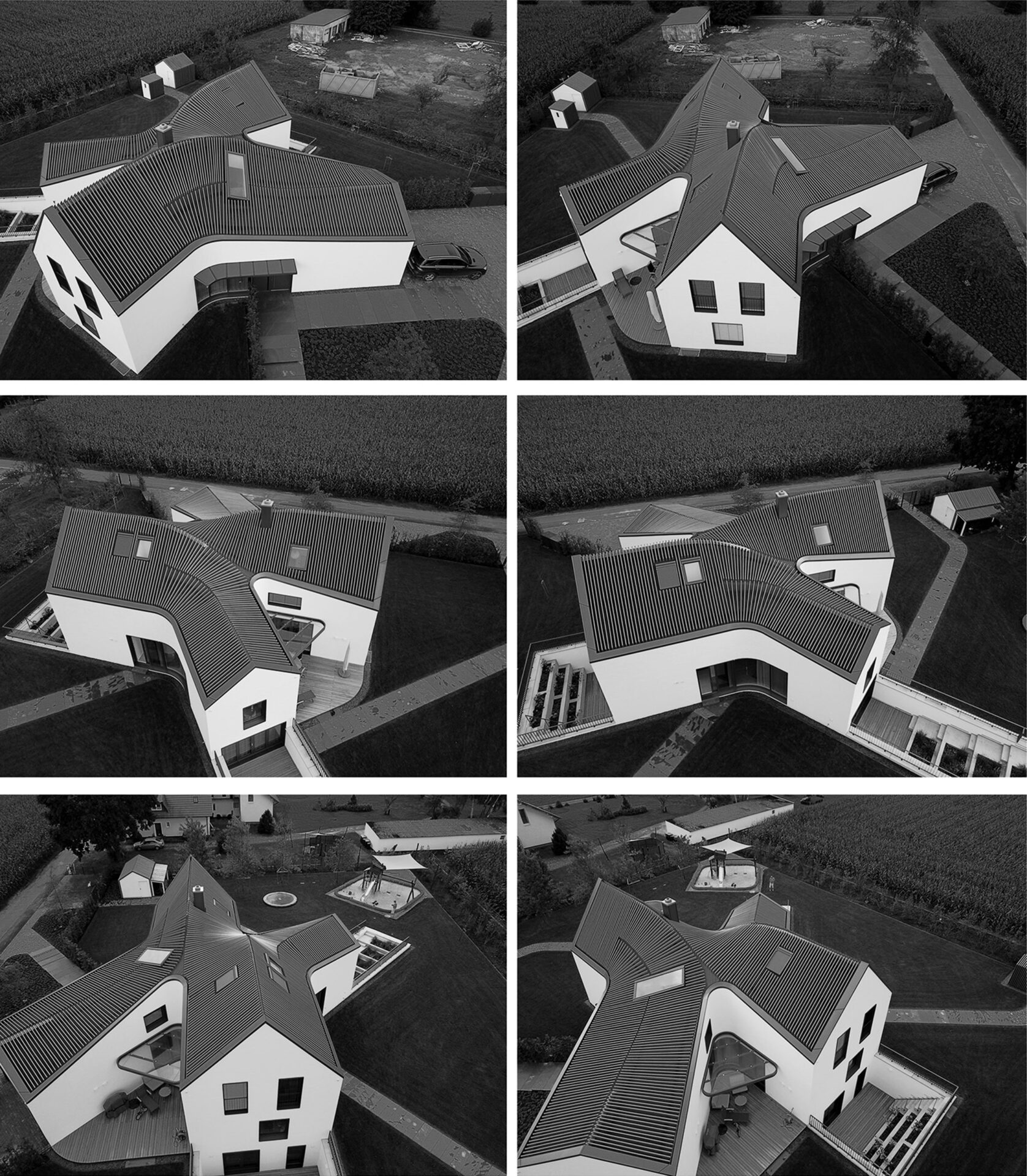
Droneshots
Transformation of a vernacular typology
House H has been inserted into a typical rural cultural landscape, that consists of mainly mid-size cottages and loosely distributed single-family houses. Here, houses and farmsteads are scattered points of orientation and neighbourhoods are experienced over distance. The local farmsteads seem to be arranged arbitrarily, but their actual arrangement results from the internal functional relationships. Thus, ridges and gables of the buildings point in different directions. Accordingly, the four gable ends of House H correspond to this pattern of architecturally expressed multidirectionality.

The plan of House H refers to the aisled barns that are typical to the region. Their nave-and-aisle-layout often show a sort of transept (a so-called “flett” containing the central fire place), that relates the house’s basic geometry closely to the central theme of the archetypical villa: the notorious nine square grid (cf. Rudolph Wittkower’s analysis of Palladio’s villas, etc.).
We have furthered this grid with a parametric model, whose geometric elasticity helped to, cover required functions, answer building legislation, optimize structural requirements, as well as balance spatial and formal intentions. On the basis of this geometric model and controlled via a pivotal point in the centre of the plan, parts of the house can be separated and rotated apart. In this way the formerly compact building volume transforms into a space-embracing structure, that is intertwined with the surrounding garden.

Central Space

Canopy
A 'baldachin' above a contemporary 'westfälische Diele'
House H is divided into two fundamentally different zones: the wings contain areas for seclusion, such as the intimate living room, the kitchen-cum-living room, the library, as well as the family’s bedrooms upstairs. The two-storey central space performs as the communicative centre of the house where a large dining table and a sequence of seating steps allow for formal and informal gatherings.
Here, House H shows a paradoxical relation to the surrounding exterior: while the rooms that are located in the wings show comparatively small window openings, the central space establishes a close connection with the garden through large glazing at four sides. Two terraces between the wings, one to the east, one to the west, reinforce this connection.
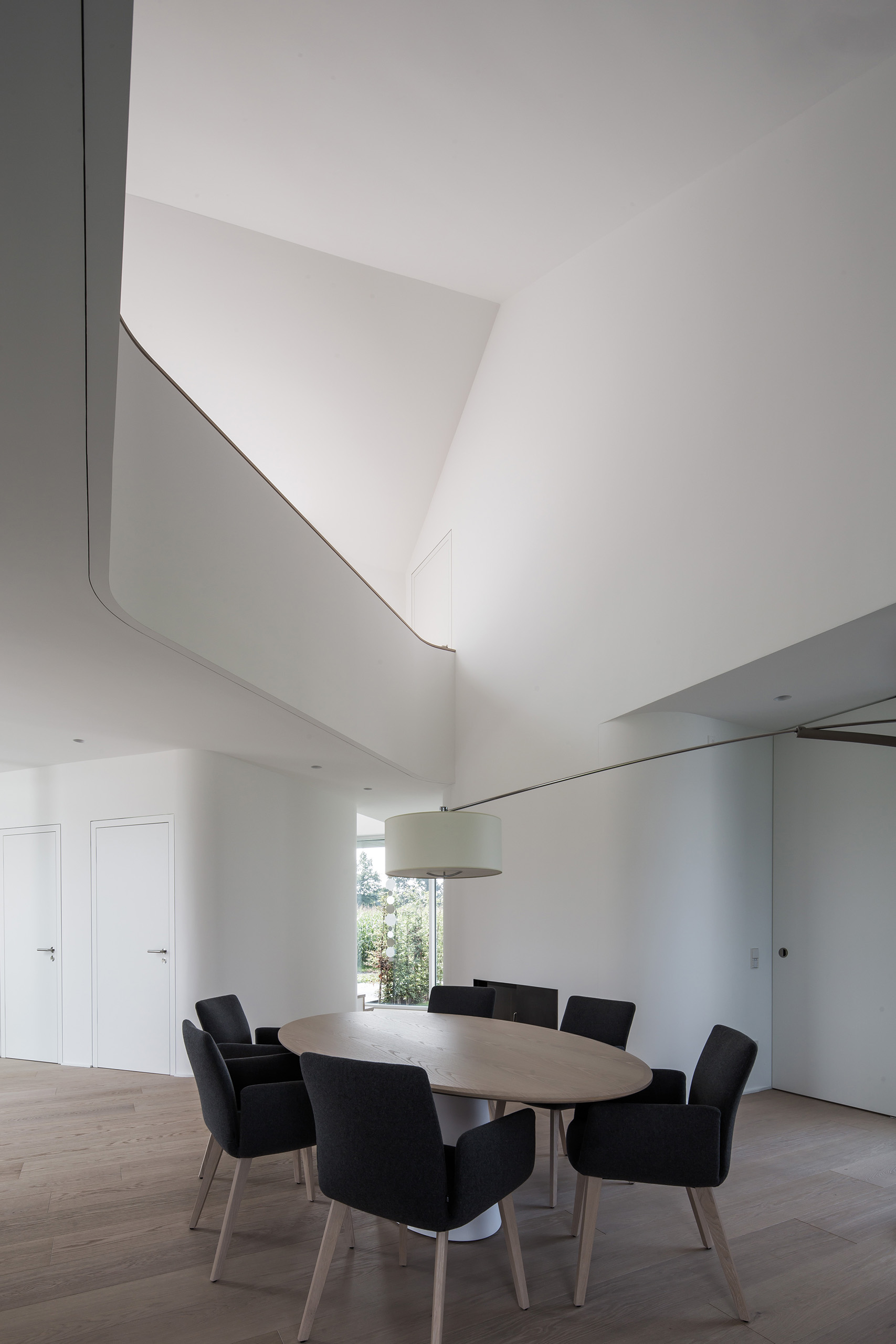
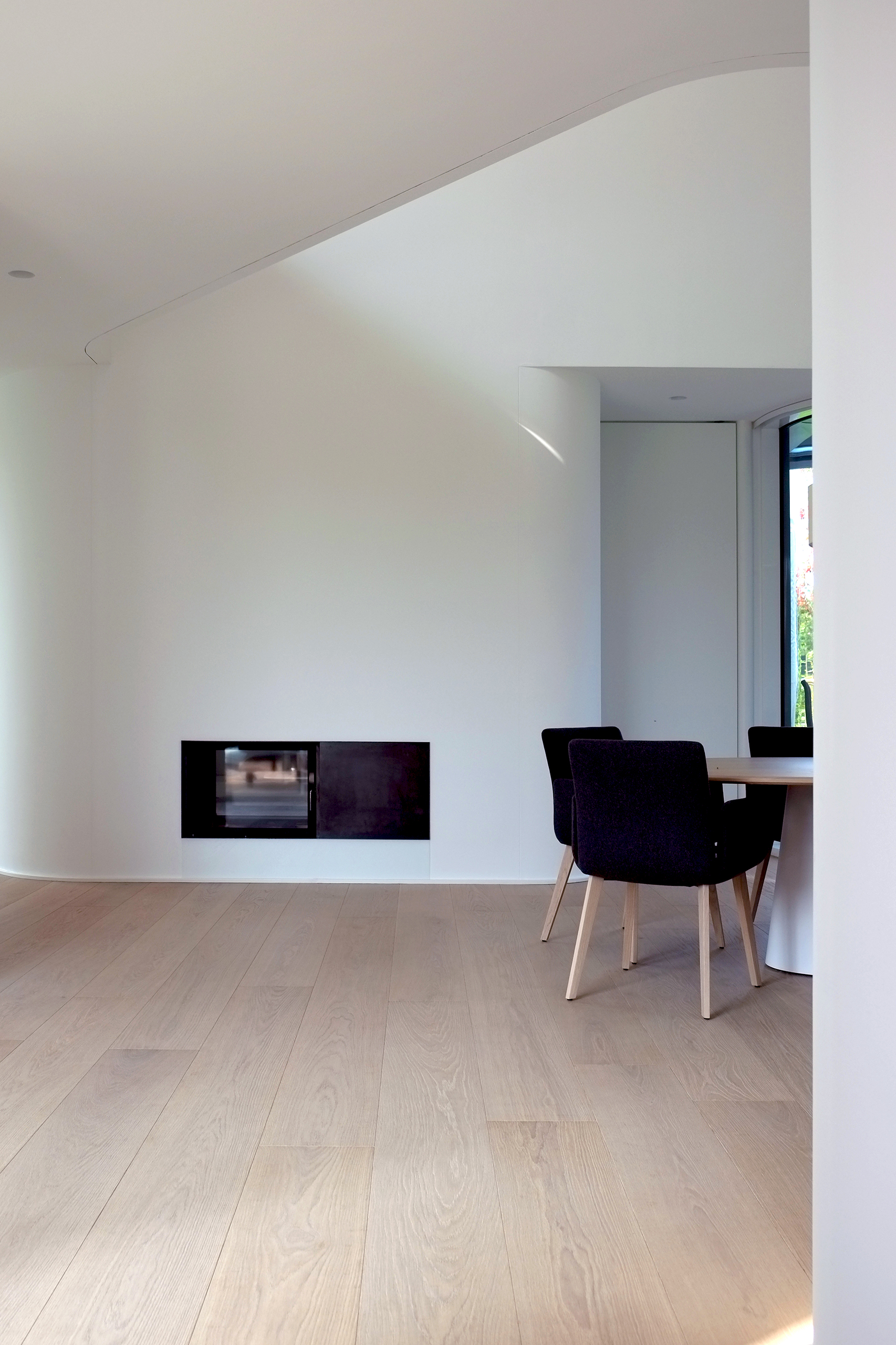

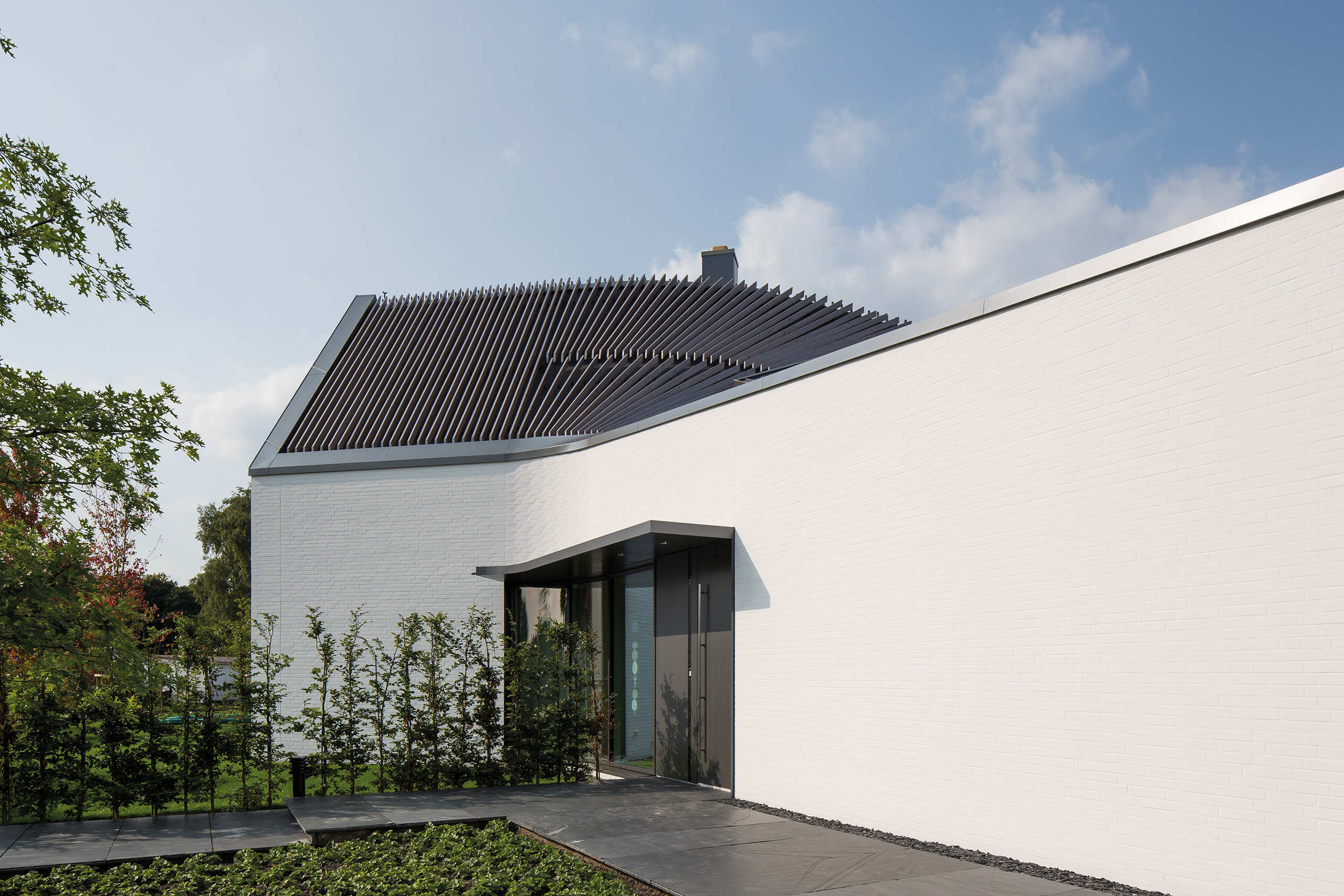
The assigned materials interpret typical local materials as they play with vernacular and contemporary form. Exposed brick façades are typical for the region. Thus, House H received a brick façade as well. Here, however, the brick wall was covered with a thin layer of white cement mortar, referencing the white walls of modernism, while the relief of the brickwork recalls the tectonics of a more contextual modernism.
The roof is covered with a layer of cedar slats that reproduce the transformation geometry of the roof structure as a refined graphic. Due to their shape, the slats vary in length and are point-fixed with specially designed joints to float above the roof’s rainproof layer. In line with the house itself, the roof structure was developed based on customised algorithms. Here, the approach towards differentiation, which also shapes the overall volume and floor plan of the building, picks up on Aalto’s early concept of “elastic standardisation”, which replaces “sameness” with “similarity”.
House H has been designed beyond the requirements of the latest German energy saving regulation (EnEV). Thus, next to the application of durable materials all exterior wall and roof surfaces contain up to 20cm thick layers of thermal insulation. All windows are at least double-glazed. A brine-to-water heat pump provides the house’s heating and warm water-supply with energy.
In order to balance the impact of a newly built house in a landscape environment the garden has been extensively planted with, regional trees, such as oak-trees, birches or apple-trees, as well as with a three-meter-wide hedge that will be a habitat for, birds, insects, and other animals.

Date
2014-2017
Place
Germany
Size
290 m²
Client
private
Team
Hans-Peter Nünning
Daniela Hake
Holger Hoffmann
Jan Hafner
Tulin Mustafa
Executive architect
Dipl.-Ing. Hubert Wewer
Structure
Ingenieurgemeinschaft Bröckling Vullhorst
Status
1.prize invited competition-entry, built
Photos
one fine day, Christian Richters
Publikationen (Auswahl)


